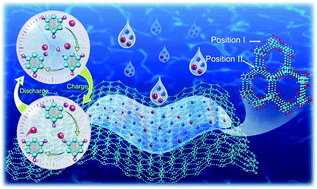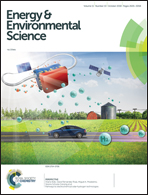Fluoride graphdiyne as a free-standing electrode displaying ultra-stable and extraordinary high Li storage performance†
Abstract
In natural two-dimensional (2D) materials (such as graphene, transition metal dichalcogenides and transition metal carbides), energy and power density are inevitably hindered by Li ion diffusion perpendicular to the compact atomic layer. At the same time, their cycling stability is affected by side reactions due to the large specific surface area and high activity of surface atoms. Here we report the preparation of a new 2D carbon rich framework called fluoride graphdiyne (F-GDY). The experiments, together with theoretical calculations, show that extraordinarily high reversible capacity (1700 mA h g−1) and extremely stable cycle performance (9000 cycles) are achieved by the reversible transition between C–F semi-ionic bonds and ionic bonds at the plateaus of 0.9 V. This bottom-up strategy offers a versatile approach to the rational design of ultra-stable flexible 2D materials through solution-based processability for application in the efficient electrodes of high performance rechargeable batteries.

- This article is part of the themed collection: 2018 Energy and Environmental Science HOT Articles


 Please wait while we load your content...
Please wait while we load your content...